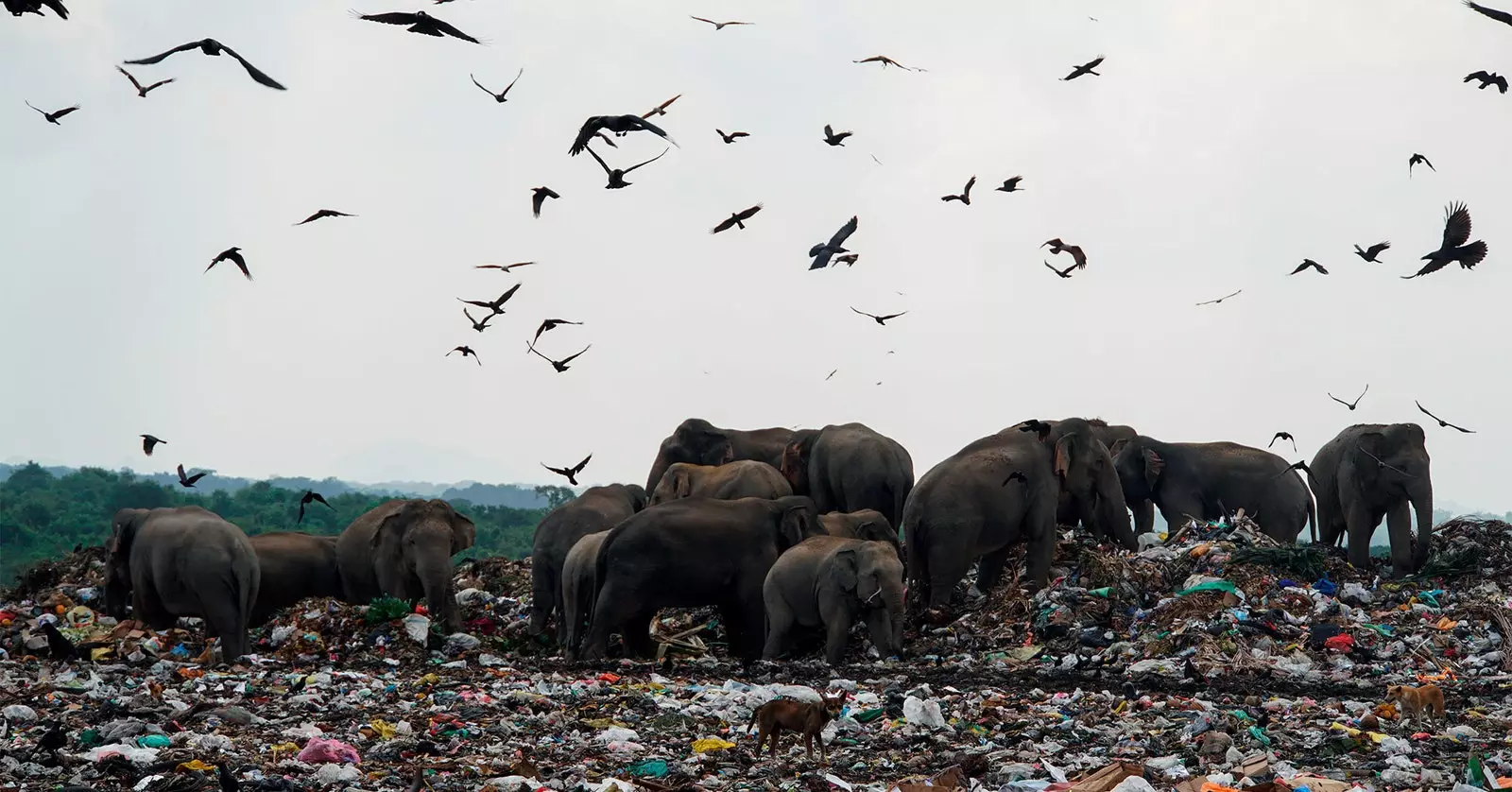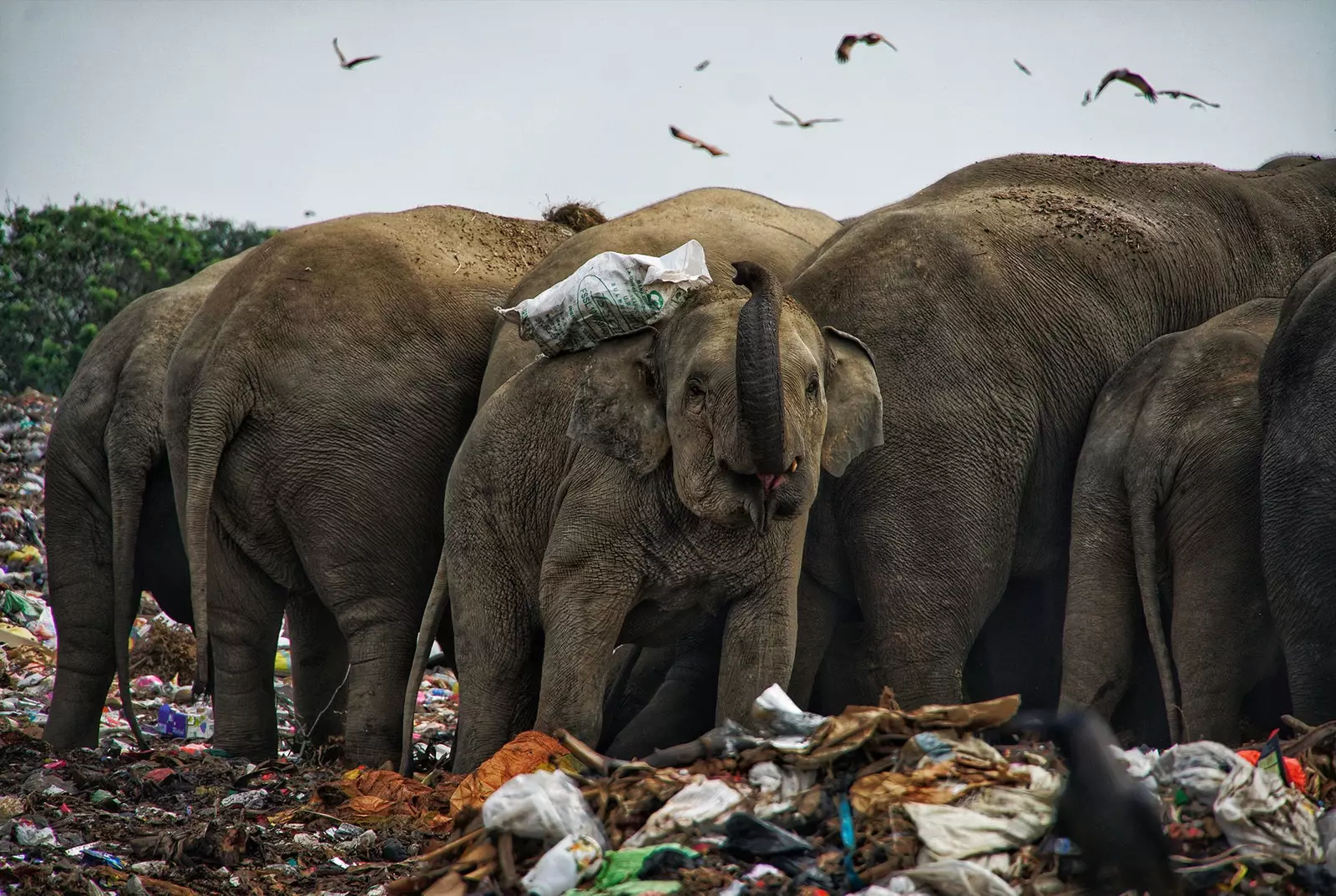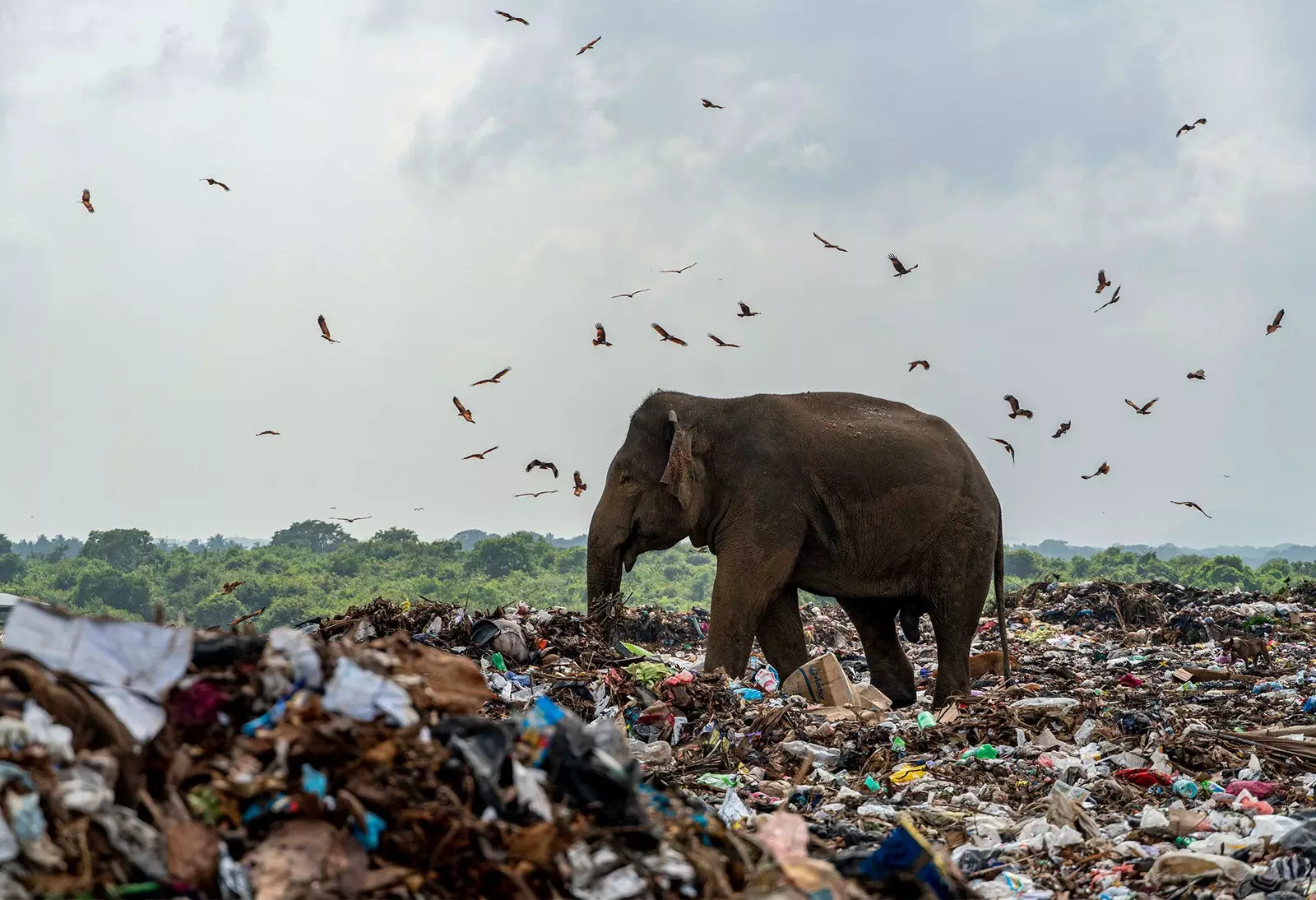
The winning photo of the Royal Society of Biology Photography Prize in 2020
A herd of elephants wandering through a huge expanse of garbage . That is the photo that has won the photo contest of the Royal Society of Biology, the Royal Biological Society of the United Kingdom. However, if we look more closely, we will see that elephants don't just walk through the rubbish: they also eat them.
"I found these elephants roaming the dump unexpectedly when I was traveling to Akkarapippattu from Jaffna," says the young Sri Lankan photographer Tharmapalan Tilaxan, author of the image. "I was irritated to see some 25 or 30 elephants looking for food in the dump , and decided that I should document this issue to bring focus to it. From then on, I took out of my schedule as much time as I could to visit the landfill on several occasions, photograph it and spread the word about this difficult situation." In all, spent 28 days at the toxic site, for twelve hours each time.
Doing so was not easy. For starters, Tilaxan lives in Jaffna in the north of Sri Lanka, while the dump is in Oluvil in the east. " It took me seven hours to get there . Also, he wasn't familiar with the area. Therefore, I had to watch the place for as long as I could, as I had no idea when the elephants would arrive at the forest dump. In addition, he had to be cautious and responsible in the midst of such a large group of pachyderms, since I have been chased by these animals before".

Tilaxan snapshots show a harsh reality that is difficult to reverse
To all this, the harsh conditions of the site were added. "After a few days, I adapted to the environment. But still, I was still experiencing suffocation and skin allergy due to the stench and fumes from the garbage.
ELEPHANTS EATING WASTE, AN ESPECIALLY SERIOUS PROBLEM
Tilaxan's shot is shocking because the majestic Asian pachyderms, which we are used to seeing surrounded by green jungles in tourist photos, wander in this case through a large waste area. " The easiest way to dispose of rubbish in Sri Lanka is to go to any forest and dump it ", explains the photographer. In addition to the degradation of the environment caused by this practice, there is also the change in the habits of the animals in the area. " Elephants become addicted to the taste of various garbage foods , which can make them completely change their lifestyle and make these dumps their dining table."
"When these animals smell food, it doesn't matter if it's covered in polyethylene, wrapped in paper or contained in a plastic container: they gobble it up. It is not possible to prevent these wastes from being trapped inside the stomachs of the elephants, which have a very sensitive digestive system, ultimately causing them a very painful death.

The government claims to be taking measures to reduce the deaths of elephants, but, for now, they do not seem enough
In Sri Lanka today live about 7,000 pachyderms but every year about 300 die . 2019 was especially fateful, with 361 deaths registered. The reasons are many: from intentional poisoning, carried out in response to the invasion of crops -animals, losing their ecosystem, come to the gardens to eat- to road accidents on the train tracks.
Added to these causes is the ingestion of microplastics to which Tilaxan draws attention, which, according to The Jakarta Post, is one of the main causes of death of these animals, as shown by autopsies. It is a whiting that bites its tail: the lack of a suitable environment causes the elephants to turn to other food sources, which, in turn, modifies their behaviors and negatively affects the entire ecosystem . "You only have to see the photos to feel sadness and shame to see these giants in the garbage", culminates the photographer, who hopes to draw the attention of the rulers with his work.
The State of Sri Lanka, for its part, claims to be working to minimize the conflict between humans and pachyderms preventing the importation of plastic and the use of single-use plastics and fencing off landfills , something that does not seem to work at all: the fence of the Oluvil dump, in fact, was crumbling, allowing these animals to roam freely.
